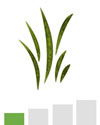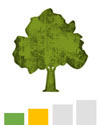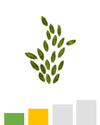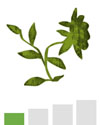University of Worcester's pollen forecast and fungal spore forecast for the UK.
Weekly pollen and fungal spore forecast summary
Forecast to Friday 23rd January 2026, for West Midlands: Pollen: hazel pollen low to moderate; Spores: low to moderate for aspergillus/penicillium types.
Grass Pollen Count - Low

Grass pollen risk will remain very low or zero until next Spring.
Tree Pollen Count - Moderate

Hazel tree pollen currently airborne. However, the risk will mainly be low during this forecast period, with a moderate risk on mild days for anyone in close proximity to any of the trees that have yellow catkins.
Fungal Spore Levels - Moderate

Aspergillus/penicillium types will be airborne during dry, mild days but the risk will often be low due to high humidity.
Weed Pollen Count - Low

Weed pollen risk pollen risk will remain very low or zero until next Spring.
School of Science and Environment
If you are interested in our pollen forecast, you may also be interested in our courses.